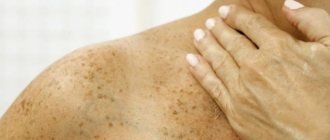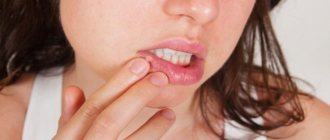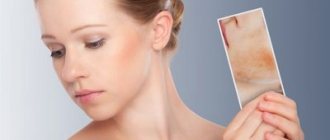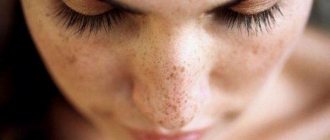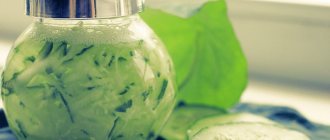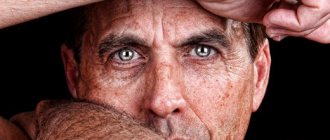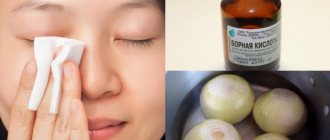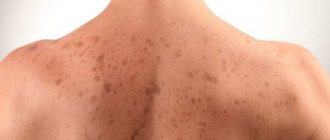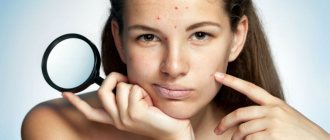Causes of age spots
There are many reasons for the appearance of age spots. The most common ones are:
- Melasma or melasma. Behind these terms lies nothing more than an excess of melanin in the skin - it is this that leads to the fact that the face gradually begins to become covered with grayish or brownish pigment spots. Such spots can appear pointwise, or can cover quite large areas of the skin. However, women are more likely to experience melasma than men. And the development of this phenomenon is greatly facilitated by genetics, taking certain medications or hormonal changes. Prolonged exposure to the sun helps to worsen the problem.
- Keratosis. Both seborrheic and actinic keratoses can easily cause age spots to appear on the skin. Seborrheic keratosis manifests itself in the form of brownish warts or moles, and actinic keratosis is accompanied by the appearance of flaky or roughened skin areas or brownish or reddish nodular seals that are prone to irritation and are very painful to the touch. In most cases, actinic keratosis occurs as a result of frequent and prolonged exposure to sunlight.
- Age. “Liver” (age) pigment spots most often attack older people, which is why they are often called senile spots or lentigo. Such spots can appear not only on the face, but also on many other parts of the body.
- Taking phototoxic drugs. Such medications can easily cause increased skin sensitivity to sunlight. These drugs include all kinds of acne medications, sulfonamides, tetracycline, some arthritis medications (quinine, etc.) and a number of antihistamines.
In addition, the appearance of age spots can be caused by pregnancy, direct skin contact with various chemicals, constant exposure to the sun, vitamin deficiency, as well as serious problems with the kidneys, liver, gall bladder or gastrointestinal tract.
Causes
In some places, the outer skin is most sensitive to the effects of adverse factors. With daily stress, melanocytes are activated, which produce pigment that changes skin color. The disease can affect both men and women.
The problem is most often localized in intimate places, armpits and inner thighs.
Also, the reasons for the appearance of dark spots on the skin between the legs are:
- chafing due to obesity or human anatomical features;
- uncomfortable, excessively tight clothes made of coarse fabric;
- age-related changes;
- reaction to cosmetics;
- injury during cosmetic procedures;
- chemical poisoning;
- fungal infection;
- diseases of internal organs (kidney and liver failure);
- hormonal imbalance;
- negative effects of ultraviolet radiation.
Methods for treating and eliminating age spots
Cream from the professional French brand Payot will help get rid of and prevent pigmentation.
Evening perfecting cream UNI SKIN JOUR with the UNI PERFECT complex effectively fights pigmentation, acne marks, redness and dull complexion. Thanks to the SPF15 filter with enhanced protection against UVA rays, with UNI SKIN JOUR cream you are reliably protected from ultraviolet damage to your facial skin. To get rid of age spots, a wide variety of means and methods are widely used - both procedural and medicinal. To say goodbye to age spots, various whitening creams are often used in combination with sunscreen. Procedures such as cryotherapy (the skin is treated with either liquid nitrogen or some other freezing substance that helps eliminate excessive pigmentation), laser therapy, chemical peeling and dermabrasion (that is, micro-resurfacing of the skin) have also shown high effectiveness. As for keratotic spots and moles, they are removed mainly using laser therapy, excision or cryotherapy.
What are the most common age spots?
Ephelides
These are the same freckles that give a special charm to many young girls. But some, in principle, do not like pockmarked skin, especially in the sunny season, when freckles become brighter and their number increases. such a surge is due to the intense synthesis of melanin and its subsequent accumulation in keratinocytes due to heredity or due to a decrease in estrogen levels in women.
Lentigo
Lentigo lesions look like spots of regular shape and different colors, which darken over time. Sizes vary from 1 mm to 2-3 cm. The causes of lentigo are considered to be age and constant sun exposure. There are simple juvenile and senile age-related lentigo.
Melasma and chloasma
These spots look almost identical - dark yellow, grayish, brownish shades with blurry outlines. Typically, chloasma and melasma appear above the upper lip, on the forehead, eyelids, cheeks, bridge of the nose, neck, and along the white line of the abdomen. Outwardly, they look like sloppy, dirty strokes.
The appearance of chloasma in women is associated with two factors - changes in hormonal levels and ultraviolet radiation. Therefore, such hyperpigmentation very often occurs in pregnant women, in those taking oral contraceptives, in women with ovarian tumors, and uterine pathologies. In men, chloasma occurs due to a decrease in testosterone and an increase in luteinizing hormone.
Melasma, in turn, is explained by pathologies of non-reproductive organs (for example, diseases of the intestines, liver), also against the background of ultraviolet radiation. On the skin they are expressed more and more intensely than chloasma, and can be episodic or chronic.
Broca's pigmented perioral dermatosis
Women aged 30-50 who suffer from digestive disorders or ovarian dysfunction often complain of this dermatosis. The lesions may have clear or unclear boundaries, a brownish-yellowish color of varying intensity, and are always localized in the area of the nasolabial triangle.
Prevention
It is much easier to prevent the appearance of age spots than to then try to get rid of them in every conceivable and inconceivable way. The most effective way of prevention is the regular use of high-quality sunscreens, the SPF factor of which is quite high, because one of the main reasons for the formation of age spots is exposure to the rays of the sun. Sunglasses and hats made from natural materials also help protect against the sun's rays.
Is it possible to completely remove pigmentation?
Alas, not all pigment manifestations can be completely removed, but modern methods can make them less noticeable. The hardest thing to get rid of is a scattering of hemp and lentigines - brown spots that rise above the surface of the skin.
When pigmentation of any origin appears on the face, first of all, it is necessary to show the colored spots to a dermatologist who can determine the cause of their formation. If during the diagnostic process it turns out that these formations were provoked by internal problems of the body, then in such a situation it will first be necessary to treat existing diseases. Otherwise, age spots will form on the skin constantly.
If it turns out that there are no problems with the body, then you can try to make the top layer of skin denser or remove pigment formations using cosmetic products or hardware cosmetology.
In the first case, the main goal will be to increase the outer layer of melanocytes, which can be achieved using nourishing care products with a moisturizing effect. When carrying out cosmetic manipulations, you will need to remember that spots do not like ultraviolet radiation and try to avoid direct rays of the sun.
Note! It is best to start removing unsightly spots from the skin in the fall. During the cold season, injured skin will be least exposed to the sun.
How to get rid of age spots at home?
Helps to get rid of age spots:
- Castor oil. Although it does not have the whitening properties of lemon, it is great for improving skin texture.
- Apple vinegar. In order to get rid of age spots, apple cider vinegar is taken orally. It will be no less effective externally if you combine it with chopped onions - five to six months of systematic use of such a pulp can work real miracles!
- Lemon juice. This highly effective whitening product will quickly help you say goodbye to fairly annoying age spots. If you wipe the stains that have formed with it twice a day, then after a few months not a trace will remain of them.
- Vitamin E. An oil solution of vitamin E is applied directly to age spots or simply taken this vitamin in the form of a wide variety of nutritional supplements.
- Aloe vera. The healing properties of this miraculous plant greatly help to even out the complexion, due to which age spots gradually become less and less noticeable.
- Cottage cheese. The following cottage cheese mask will be especially good: combine a tablespoon of cottage cheese with one drop of hydrogen peroxide and a similar amount of ammonia, and then apply the resulting mixture to the face and leave for a quarter of an hour.
As for getting rid of age spots, in this case home remedies can only play an additional role; the main way to eliminate them should be procedures such as deep chemical peeling, cryotherapy, photorejuvenation and laser rejuvenation.
Dark spots on the skin: causes and their elimination
Traces of eels
On the Internet you can find a lot of different recipes - useful and not so useful - on how to deal with acne. However, the marks remaining on the face after such treatment often look no less repulsive. Why do they even appear?
Possible reasons
Dark spots on the skin may indicate that at one time you removed pimples in an unacceptable way, for example, by squeezing them and causing an infection. Therefore, to keep your face free from blemishes, scars and blemishes, you need to pay close attention to acne treatment first. But what to do if the moment is missed?
Treatment
Unfortunately, it should be noted that deep scars and depressions cannot be removed at home; you will need many visits to the cosmetologist. But dark spots after acne can be removed on your own using various masks and compresses.
Folk remedies
One of the most effective remedies is rightfully considered a mask made of green clay and rosemary (more precisely, the essential oil of this plant); With its regular use, dark spots on the skin disappear without a trace. Preparing a mask is extremely simple: mix a little powdered clay with a few drops of essential oil and dilute the mixture with water. Ideally you should be able to
mushy mass - it should be applied to problem areas of the skin. When the mask dries, wash it off with cold water. In general, many essential oils are quite effective in combating such troubles as dark spots on the skin. However, they should be used with caution: many of them have a tonic effect and can increase blood pressure.
Whitening mask
This recipe not only helps cleanse the skin, but also has a whitening effect - if you are proud of your caramel tan, use some other product. Mix one egg white with a small amount of lemon zest and apply the mask onto dark spots on the skin; keep for at least twenty minutes. Or try this option: white clay plus lemon juice; This mask should be kept a little smaller than the previous one. Lightening
Unsightly marks can cover not only the face: many dermatologist patients are interested in how to remove dark spots under the arms. In this case, doctors advise to lighten them as much as possible. This is quite simple to do: mix tomato pulp with a teaspoon of starch and apply the product for fifteen minutes. You can also use the recipe of our mothers and grandmothers, that is, prepare a cucumber mask.
Essential oils
Let's talk in more detail about essential oils: they can be indispensable in the fight against acne marks. We have already discussed the miraculous properties of rosemary oil. Try also tea tree (you can mix the oil with lemon juice) or lavender. All oils can be purchased at any pharmacy. Cloves, lavender and mint can be diluted with olive oil - massage your skin with the resulting mixture, and after a few days it will be much more pleasant to look in the mirror than before.
Paraffin
Do you know the properties of paraffin? This is not only the material from which candles are made. Melt it and apply it to the stains with a cotton swab. Wait until the skin feels tight and carefully remove the paraffin. Doesn't your face look clean and smooth?
How many procedures will be needed
The number of procedures is determined by the following factors: what method is used, which pigment spots need to be removed and how deep they lie.
Continuous laser resurfacing is done once, in exceptional cases - twice. Fractional photothermolysis, as mentioned above, requires a course of procedures - 3-4 with an interval of 5-6 weeks.
Typical laser exposure without damaging the skin is repeated on average 3 to 7 times. Sometimes 1 or 2 procedures are enough to remove not too dark superficial, fresh stains.
